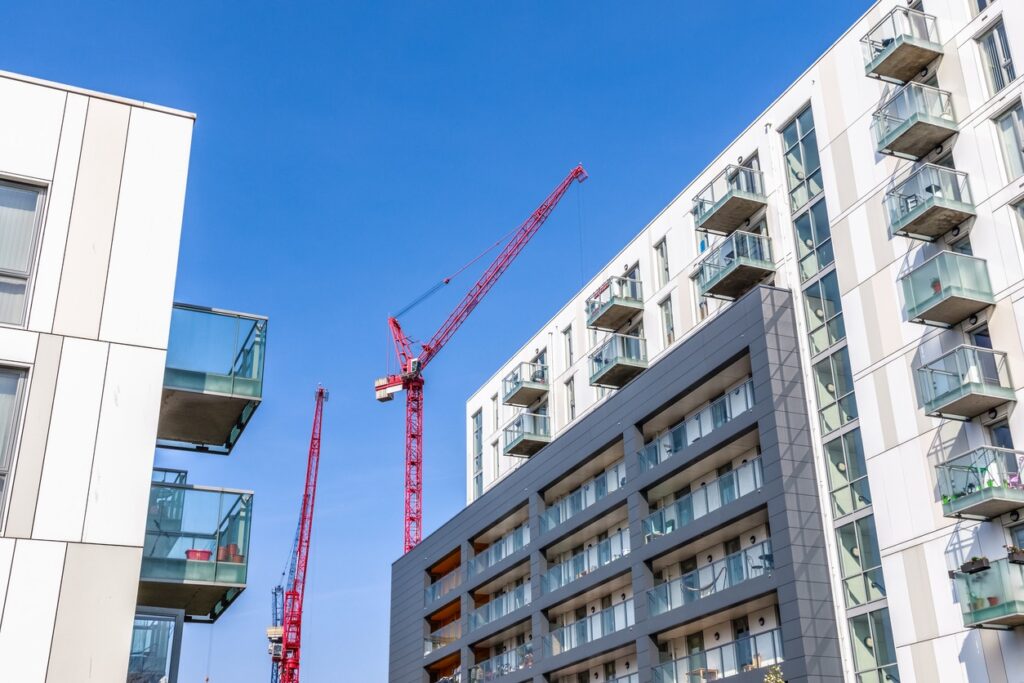
The Supreme Court recently handed down a significant judgment in the case of URS Corporation Ltd v BDW Trading Limited [2025] UKSC 21. This decision has major implications for the construction and property industries, particularly concerning liability for building defects and the impact of the Building Safety Act 2022 (BSA).
Background:
- BDW Trading Limited (a developer group including brands such as David Wilson Homes and Barratt Homes) contacted URS Corporation Ltd to provide structural design services for two high-rise residential developments.
- Later, BDW discovered structural design defects in these developments, which were considered dangerous. These issues arose out of URS’s failure to exercise reasonable skill and care in the provision of its design services.
- Crucially, at the time the defects were discovered, BDW no longer had a proprietary interest in the buildings (having sold the flats) and any direct claims against them by homeowners were time-barred. The defects had only been discovered because BDW undertook safety reviews of its portfolio following the events of Grenfell.
- Despite this, BDW undertook significant remedial works to address the dangerous defects.
- BDW then sought to recover the costs of these remedial works from URS, bringing claims in negligence and subsequently being permitted by the court to amend their claim to include claims under the Civil Liability (Contribution) Act 1978, and the Defective Premises Act 1972 (DPA) due to the retrospective extension of limitation periods by the BSA.
- BDW were successful at first instance and in the Court of Appeal. URS subsequently appealed to the Supreme Court on four specific issues.
Key Issues and the Supreme Court’s Rulings:
The Supreme Court addressed four main issues, upholding the Court of Appeal’s decision on all grounds:
1. “Voluntariness Principle” in Negligence Claims: Was the damage suffered by BDW outside URS’s scope of duty and/or too remote?
-
- URS’s Argument: URS argued that BDW’s decision to carry out remedial works was “voluntary” because BDW no longer owned the properties and was under no immediate legal obligation to perform the repairs (as claims against them were time-barred). Therefore, URS contended that the losses were outside the scope of their duty of care or too remote.
- Supreme Court’s Decision: The Supreme Court firmly rejected a “bright-line rule” of voluntariness preventing recovery in negligence claims. They held that whether costs are recoverable depends on factual questions of legal causation and mitigation, where the “voluntariness” of the claimant’s actions is a relevant factor but not a definitive bar. It will depend on the reasonableness of the decision to undertake the works in the particular circumstances. In this case, the Court consider that BDW acted reasonably in carrying out the repairs, observing that they were not truly voluntary in such a way that broke the chain of causation between the breach of duty and the loss or in a way that meant BDW had failed to mitigate its loss.
- Reasoning: The Court considered factors that made BDW’s actions reasonable, including:
- The risk of personal injury or death to occupants if the defects were not remedied.
- The underlying (though time-barred at the time it undertook the work works) legal liability BDW had to homeowners under the DPA.
- BDW’s commercial interest in avoiding significant reputational damage.
- The strong public policy favouring the remediation of dangerous defects. The Supreme Court noted that “the policy of law favours incentivising a claimant in BDW’s position to carry out the repairs so as to ensure that any danger to homeowners is removed”.
- Impact: This means developers and building owners who incur costs to rectify dangerous defects, even if not under immediate legal compulsion from third parties, may still be able to recover those costs from negligent parties like designers or builders in a negligence claim. This may encourage developers to undertake remedial works where they might not otherwise have done so, because they can still seek to recover a contribution from negligent contractors.
The Supreme Court also criticised (albeit did not overrule) the decision in Pirelli General Cable Works Ltd v Oscar Faber & Partners [1983] 2 AC 1, that damages accrue from when the defect occurred not from when it is discovered. The Court suggested that there “there are strong arguments of principle for accepting that there can only be an actual loss once the pure economic loss has been discovered or could reasonably have been discovered”.
2. Retrospective Application of Building Safety Act 2022 (BSA) Limitation Periods:
-
- Issue: The BSA retrospectively extended the limitation period for claims under Section 1 of the Defective Premises Act 1972 (DPA) from 6 to 30 years (for claims accruing prior to 28 June 2022). The question was whether this extension also applied to “onward” claims (like negligence or contribution claims) that were dependent on the DPA’s limitation period.
- Supreme Court’s Decision: The Court confirmed that Section 135(3) of the BSA applies to claims that are dependent on the limitation period in Section 1 DPA, even if they are not direct actions brought under that section. The objective of the BSA was to hold those directly responsible for building safety defects accountable and to protect leaseholders from physical and financial risk.
- Impact: This reinforces the “polluter pays” principle of the BSA, making it easier for developers to bring claims against those responsible for historical building safety defects, even if the original claims under the DPA against the developers might have been time-barred before the BSA came into force.
3. Developer Owing and Being Owed a Duty under the DPA:
-
- Issue: URS argued that a developer, who owes a duty under the DPA to those who acquire an interest in a dwelling, cannot also be owed a duty under the DPA by those who perform work for them (like a structural designer). URS argued that the objective of this provision was to protect homeowners not developers.
- Supreme Court’s Decision: The Court rejected this, holding that the DPA duty is broad and a developer can indeed both owe a duty and be owed a duty under Section 1(1)(a) of the DPA, particularly where the dwelling is provided “to the order of” the developer as the first owner. The Supreme Court supported the Court of Appeal’s view that “it would be contrary to consumer protection principles to conclude that the developer was not owed the relevant duty by one of the key professionals responsible for the design and construction of the building…that would hinder consumer protection rather than enhance it.”
- Impact: This clarifies that developers, as original “orderers” of the work, can claim against their contractors/designers e.g. architects, engineers under the DPA for defects. This is significant as the extension of the limitation period in the DPA means claims can now be brought for 30 years.
4. Contribution Claims under the Civil Liability (Contribution) Act 1978
-
- Issue: The Supreme Court was asked to determine when BDW’s right to claim a contribution from URS under the 1978 Act arose. URS argued that BDW could not bring a claim for contribution because no judgment had been made against BDW, no settlement reached, and no third party had even asserted a claim against them; BDW’s right to recover a contribution under the 1978 Act did not arise unless and until the existence of BDW’s liability to a potential claimant had been ascertained by a judgment against it, an admission of liability by BDW or a settlement. By contrast, BDW argued that the right to a contribution arose as soon as a potential claimant suffered damage for which it and URS were each liable, even if the potential claimant has not claimed; this would occur at the time of completion of the relevant development/works.
- Supreme Court’s Decision: The Court disagreed with both BDW and URS’s positions, finding that the true legal position lies between the two extremes. The Court held that the right to recover contribution arises when two conditions are met:
- Damage has been suffered by a claimant (e.g., homeowners) for which both parties (BDW and URS) are liable; and
- The party seeking contribution (BDW) has paid, been ordered to pay, or agreed to pay compensation in respect of that damage. At that point – and not before – BDW was entitled to recover a contribution from URS and the two-year limitation period within which such a claim must be brought commences.
It was sufficient that BDW had made a payment in kind (by performing remedial works) in compensation for the damage suffered by the homeowners.
-
- Impact: This is a significant point for developers. It means they can recover contribution from negligent parties even if they have voluntarily carried out remedial works without a formal judgment, settlement, or even a direct claim from homeowners, provided they made a payment “in kind” (by performing the remedial works) to compensate for the damage.
Overall Impact:
The Supreme Court’s decision in URS v BDW has far-reaching consequences for the UK construction and property industries, especially in the context of building safety.
-
- Empowers Developers: It significantly empowers developers to recover costs for remediating historical building defects from those responsible, even when no direct claim has been brought against them by homeowners and when they no longer own the property.
- Strengthens “Polluter Pays” Principle: The judgment strongly supports the “polluter pays” principle, ensuring that those who cause building safety defects are held accountable.
- Encourages Remediation: By reducing the risk of unrecoverable costs, the decision is likely to incentivise developers to undertake necessary remedial works more readily, enhancing building safety. In this way, the decision strengthens the policy behind the BSA and the DPA to enhance building safety and encourage those in the construction industry to pro-actively address defects.
- Wider Scope for Claims: It broadens the scope for claims in negligence and under the DPA, and clarifies the circumstances in which contribution claims can be brought.
- Focus on Factual Causation: The rejection of a rigid “voluntariness principle” means that courts will focus on the factual reasonableness of a claimant’s actions when assessing legal causation and mitigation.
In essence, the ruling underscores a clear policy intent to ensure accountability for building safety defects and to facilitate the recovery of costs for their remediation.
This update is for general purpose and guidance only and does not constitute legal advice. Specific legal advice should be taken before acting on any of the topics covered. No part of this update may be used, reproduced, stored or transmitted in any form, or by any means without the prior permission of Brecher LLP.




